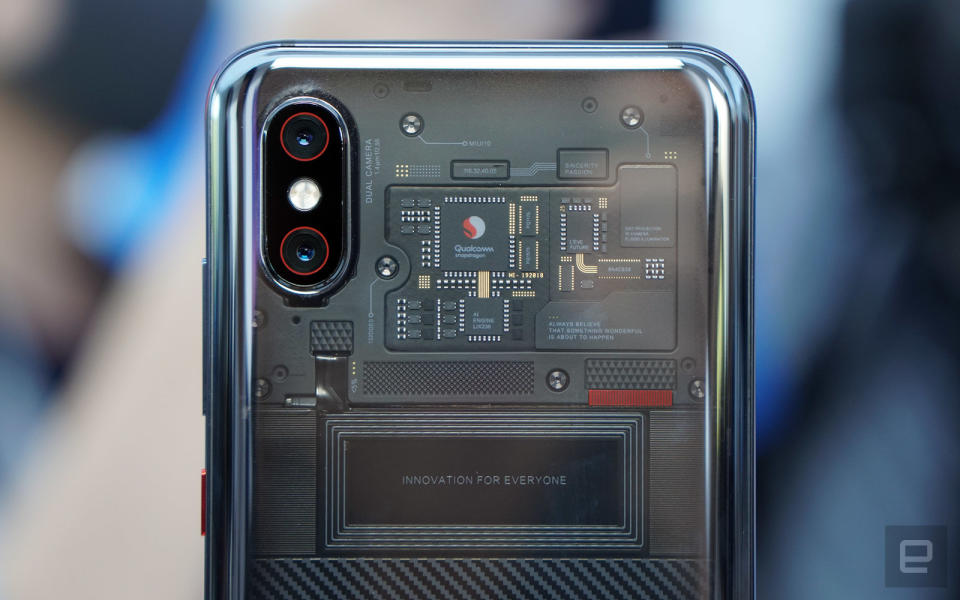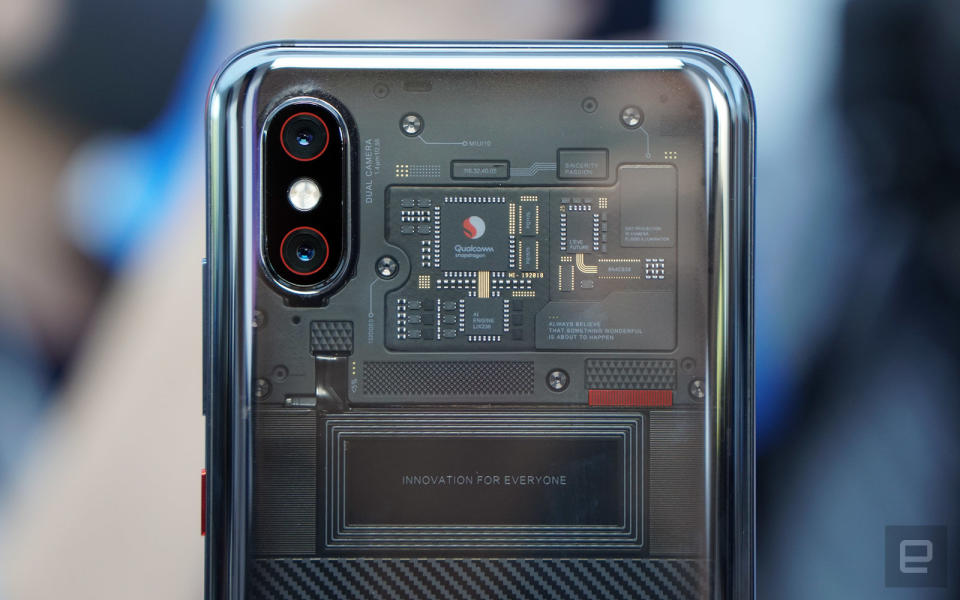A closer look at the transparent Xiaomi Mi 8
It's basically free promotion for Qualcomm.
Out of the handful of new devices from Xiaomi today, it was the Mi 8 Explorer Edition that stole the show with its transparent design. Right after the keynote, I had to fight a crowd to get up close and personal with one of the few demo devices available, and it was worth the effort. While Xiaomi's website has stated that what's on display doesn't correspond to every single component, a company rep claimed that they are actually all legit, especially the Snapdragon chipset -- which is basically free promotion for Qualcomm-- and its surrounding electrical components. Assuming this is indeed the truth, what remains a mystery is whether this kind of layout would suffer from weaker heat dissipation.
But for now, I'm all for just gazing at this mesmerizing device. Transparent design is nothing new in the smartphone world, of course. Most recently, we've seen HTC offering translucent options for its U12+ and U11+, then a little while back there was also the transparent Firefox OS phone from Japan's KDDI, but they actually don't show much -- it's usually just the battery, NFC coil, screws and a few ribbons. Xiaomi went the extra mile with its Mi 8 Explorer Edition by showing alleged real parts on the logic board, and such fine details add a lot to this look.

Having said that, there's probably too much detail as well. I'm not a fan of those random words dotted around the body, especially the two lines that read like they could have been pulled out of fortune cookies. Seriously, one of them reads: "Always believe that something wonderful is about to happen." That's deep. If Xiaomi must keep one line, though, then I'll make do with the "innovation for everyone" tag on the NFC module.
Cheesy lines aside, the Mi 8 Explorer Edition appears to be a fun device to have, and 3,699 yuan (about $580) isn't too bad for a flagship device with Snapdragon 845, 8GB of RAM, 128GB of storage, dual cameras and 3D face scanner. Alas, there's no word on Western availability; there isn't even a date yet for China, so we'll just have to be patient with this one and hope for the best.
Update: A source from the supply chain informed Engadget that it is simply not possible for the logic board components -- especially the chipset -- to be exposed that way. What we're most likely looking at here is a nicely decorated piece of RF shield, which is necessary for blocking interference between components -- you can actually make out the three shielded zones if you look closely. The convincing look is then achieved by laying out what could be real but non-functioning components around the dummy chipsets. This matches the finding of Twitter user @ChengmingAlpert, whose sources at Xiaomi described those components in a similar way.
That is to say, everything you see above the logic board is purely for aesthetic purposes. While Xiaomi's claim of showing real components here isn't entirely false, we just wish that the company was upfront about this in the first place.





















